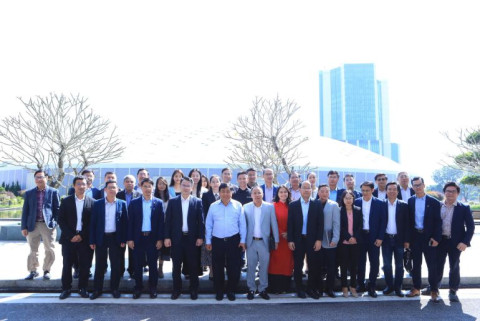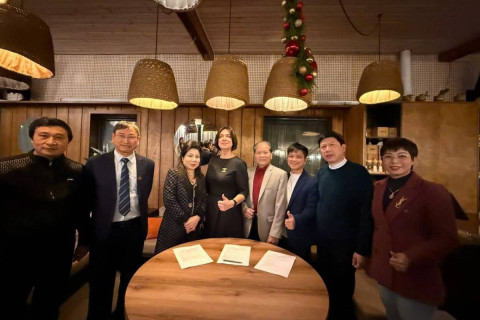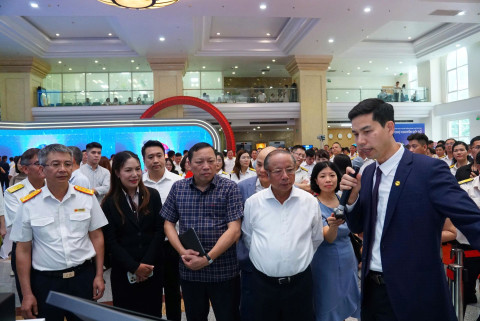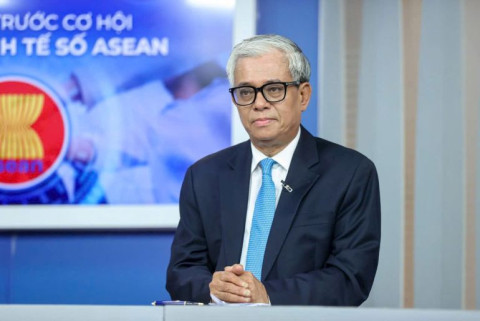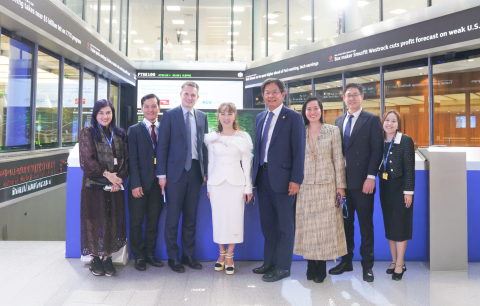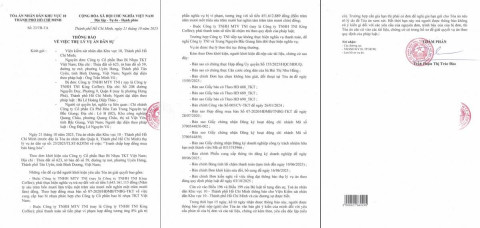Obstacles in Green Production in the Textile Industry
- 205
- Business
- 17:49 20/03/2024
DNHN - The textile industry is one of the largest and most important industries, contributing significantly to the global economy. However, the industry is facing many challenges in greening its production for sustainable development.
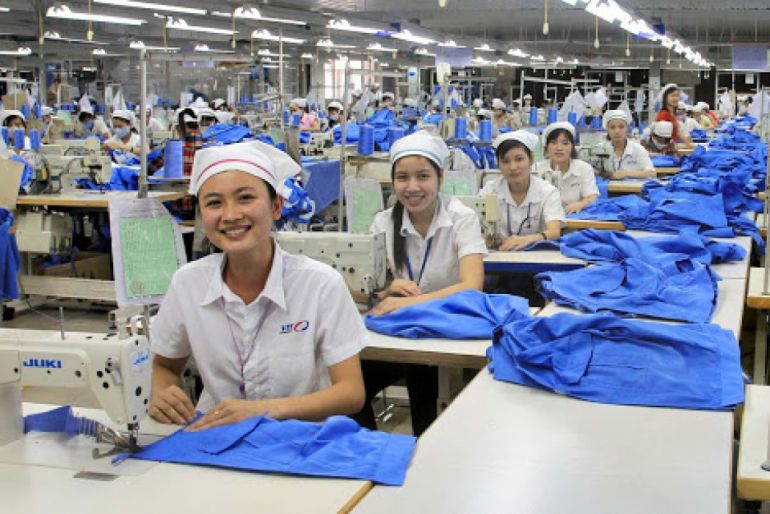
Challenges of the Textile Industry
The textile sector has difficult resource and waste management needs. It consumes a large amount of water and raw materials such as cotton, wool, synthetic fibres and chemicals. However, ensuring a sustainable supply of resources and reducing the amount of resources used can be a major challenge.
The production chain in the textile industry generates a large amount of solid waste and wastewater that are harmful to the environment. Proper waste treatment and recycling is a challenge that needs to be addressed to reduce the negative impact on the environment.
The textile and garment industry also frequently has high labour levels and needs inexpensive labour, in addition to having strict labour and safety regulations. This can lead to unsafe and unfair working conditions. To green the production chain, it is necessary to ensure a safe working environment and fair working conditions for workers.
Ensuring the rights and well-being of workers in the textile industry is a challenge. There is a need for strong policies and regulations to ensure that companies comply with labour rights, including fair wages, reasonable working hours and benefits for workers.
The production process in the textile industry generates emissions that pollute the environment, including emissions from machinery and waste treatment processes. Reducing emissions and responding to climate change is another challenge for the industry.
It is worth noting that in European countries, there is now a Green Deal (EGD) with targets set for 2030 and a vision for 2050; including a separate agreement on the development of sustainable textiles with many requirements for recycled materials and product life.
In 2024, the EU is also expected to introduce Ecodesign regulations in the textile industry to limit textile waste and food waste in Farm to Fork. These regulations require manufacturers and exporters to prepare and convert production accordingly.
Professor Andreas Stoffers, Country Director of the Friedrich Naumann Foundation (FNF) in Vietnam, said that for the Vietnamese textile industry, the EU has been and is a leading export market. However, for the EU, textiles are among the top industries causing environmental degradation and climate change.
Therefore, textiles are also among the EU’s most focused green efforts. Most of the EU’s green textile policies are focused on the Circular and Sustainable Textiles strategy with policy directions on eco-design ensuring durability, repairability, recyclability, enhanced information through the product’s digital passport, information requirements to combat greenwashing, minimising the release of microplastics from textile products into the environment, minimising toxic chemicals in fibres and applying extended producer responsibility…
Compared to many other industries and sectors, the standards applied to the textile industry are considered more complex, challenging and significant, covering all textile products and being legislated as minimum legal requirements, and mandatory implementation rather than just recommendations.
In addition, the standards, measures and regulations of the EU Green Deal affect many stages in the production chain, from design to raw materials, from production, cultivation to transportation, from use to repair, from disposal to recycling… not just applying to the final product.
Although the challenges are such, if the green standards in the production industry are strictly adhered to and implemented, it will help the transition to green production in a proactive, synchronous and comprehensive manner. This is a great opportunity for businesses and also the best way for businesses to get ahead, with early access to the EU’s potential green product market with a rapidly growing green consumer base in the region.
In addition, early adaptation to green requirements in the EU also provides some assurance of the export capacity of businesses to other developed markets such as the United States, the United Kingdom, Japan, Australia…

According to Assoc. Prof. Dr Dinh Trong Thinh, a senior lecturer at the Academy of Finance, in the process of greening production, and reducing carbon emissions has received more attention from many businesses. Although the change is not much, the transformation is clear. This has created favourable conditions for Vietnamese goods to access demanding markets.
Mr Thinh said that in addition to the efforts of businesses, there needs to be the accompaniment of the Government, ministries, sectors and localities in creating a policy corridor to encourage investors to move towards “green production”; which, mainly policies on credit with preferential interest rates and limits for businesses investing and producing green products. This is also a specific step for Vietnam to achieve the “zero carbon” commitment by 2050.
Measures to Green the Production Chain in the Textile Industry
Firstly, the textile industry needs to find ways to use sustainable raw materials such as organic cotton, recycled fibres and environmentally friendly chemicals. At the same time, recycling and reusing waste in the production process should be promoted.
Secondly, companies in the textile industry should invest in research and development of new technologies to improve production efficiency, save energy and reduce emissions. Green technologies such as energy management systems, automation and the use of renewable energy sources can be applied.
Thirdly, businesses need to ensure a safe and fair working environment for workers, while complying with regulations on fair wages and labour rights.
Fourthly, businesses in the textile industry need to create a sustainable supply system by working closely with suppliers, manufacturers and other partners to ensure compliance with green standards and track product origins.
The textile industry is facing challenges in greening its production for sustainable development. However, with investment in advanced technology, efficient resource and waste management, improved working conditions and cooperation in the textile industry’s supply chain, these challenges can be overcome.
Nghe Nhan
Related news
- From New Year messages of World Leaders to the “new rules” of the Global economy in 2026
- Connecting Leaders, Shaping the Future: Strategic Leadership Planning Meeting – CorporateConnections Hanoi A
- Sunlight - Unilever Vietnam Recognized for Outstanding Contributions to the National Initiative Supporting Women Entrepreneurs
- Deputy Prime Minister Nguyễn Chí Dũng: “The country’s major challenges weigh heavily on my mind — and we must resolve them together.
- Unitsky String Technologies signs cooperation agreements with three Vietnamese partners, opening a new direction for smart mobility and sustainable development
- When artists do business – livelihood is no poetry!
- Before the D‑day to abolish flat‑rate tax: Fear of technology and costs leave small traders struggling to adapt
- Vietnamese enterprises at a crossroads: the impact of a potential US–China deal
- "Digital technicians" must not be forgotten if Vietnam aims to meet its strategic goals
- HDBank: Impressive profit growth, leading in profitability and advancing international integration
- TNI King Coffee sued for over VND 5 Billion in unpaid debts
- VINASME and Jeonnam Technopark Sign MOU on technology cooperation, human resource training, and trade promotion
- Vietnamese entrepreneurs strengthen ASEAN connectivity in the digital iIntegration era
- Prime Minister: Vietnam aims to become a regional logistics hub
- Vietnam upgraded to Secondary Emerging Market by FTSE Russell
- Hanoi’s economy grows 7.92% in first nine months of 2025, FDI surges nearly threefold
- Vietnam’s strong gdp growth fails to ease labor market distress
- US tariffs on Brazil propel Vietnam’s pangasius into global spotlight
- VietLeap AI Accelerator launches: A strategic springboard for Vietnam’s AI startups
- CICON expands strategic alliances: A new step forward in Vietnam–Korea business connectivity
Đọc thêm Business
From New Year messages of World Leaders to the “new rules” of the Global economy in 2026
At a pivotal moment of transition, New Year messages from capitals such as Hanoi, Beijing, Washington and Paris reflect distinct priorities and strategic visions.
Connecting Leaders, Shaping the Future: Strategic Leadership Planning Meeting – CorporateConnections Hanoi A
"Your network is your most powerful flowing asset. It generates value, multiplies opportunities, and accelerates your influence across borders."
Innovative ESG enterprise: Trạm Xe Việt startup proposes solutions to build a green mobility ecosystem
As Vietnam commits to achieving Net Zero by 2050 and tightens emissions standards, the transportation sector faces unprecedented pressure to transform.
Deputy Prime Minister Nguyễn Chí Dũng: “The country’s major challenges weigh heavily on my mind — and we must resolve them together.
On the morning of November 26, 2025, Deputy Prime Minister Nguyễn Chí Dũng chaired a high-level working session at the National Innovation Center (NIC) in Hòa Lạc.
Unitsky String Technologies signs cooperation agreements with three Vietnamese partners, opening a new direction for smart mobility and sustainable development
The signing ceremony took place in Minsk, Belarus, on November 28, 2025.
Before the D‑day to abolish flat‑rate tax: Fear of technology and costs leave small traders struggling to adapt
From 1 January 2026 the flat‑rate tax regime will be abolished. Small business households will be required to declare tax based on actual revenue. MISA supports the transition with technology to help micro‑merchants adapt smoothly and transparently.
Vietnamese enterprises at a crossroads: the impact of a potential US–China deal
As the world closely monitors every shift in US-China relations, emerging signals of a strategic agreement between the two global powers are raising hopes for global economic stability.
HDBank: Impressive profit growth, leading in profitability and advancing international integration
Ho Chi Minh City Development Joint Stock Commercial Bank (HDBank, stock code HDB) announced its consolidated profit before tax for the first 9 months of 2025 reached VND 14,803 billion, marking a 17% increase year-on-year (YoY).
TNI King Coffee sued for over VND 5 Billion in unpaid debts
On October 21, 2025, the People’s Court of District 10 in Ho Chi Minh City officially accepted a civil lawsuit concerning a commercial contract dispute between TKT Vietnam Plastic Packaging Joint Stock Company and TNI King Coffee Co., Ltd.
VINASME and Jeonnam Technopark Sign MOU on technology cooperation, human resource training, and trade promotion
On October 15, 2025, in Hanoi, VINASME and Jeonnam Technopark (Korea) signed an MOU to promote trade, advance technology transfer, and develop human resources between enterprises of both nations.





